Tom's Guide Verdict
The Asus ZenFone AR is the first smartphone to offer both Google Daydream and Project Tango in one stylish, pocket-friendly device.
Pros
- +
Stylish design
- +
Solid performance
- +
Excellent camera
- +
Supports Google Daydream VR and Project Tango
Cons
- -
Single speaker lacks oomph
- -
AR and VR quickly drains the battery
- -
Not enough Project Tango apps right now
Why you can trust Tom's Guide
When it comes to augmented and virtual reality on smartphones, it's been an either-or-case for nearly every device up until now. Not so with the Asus ZenFone AR ($599 unlocked, $649 Verizon). The first to combine Google’s Project Tango AR technology with Google Daydream virtual reality, the ZenFone AR is a lean, mixed-reality machine.
But the firsts don't stop there. This ZenFone offers a whopping 8GB of RAM supplementing a powerful, though not top-of-the-line, Snapdragon 821 processor. That means smooth performance whether you're exploring virtual worlds, augmenting the physical plane or just kicking back and listening to some jams.
While other smartphone makers are using metal or glass to give their devices a premium look, Asus went for leather, and I love it.
Design: Surprisingly Upscale
While other smartphone makers are using metal or glass to give their devices a premium look, Asus went for leather, and I love it. With the exception of the strip of metal holding the three cameras at the top of the handset (more on that later), the rest of the panel is covered in black burnished leather. The material is soft to the touch, while still providing a solid grip.
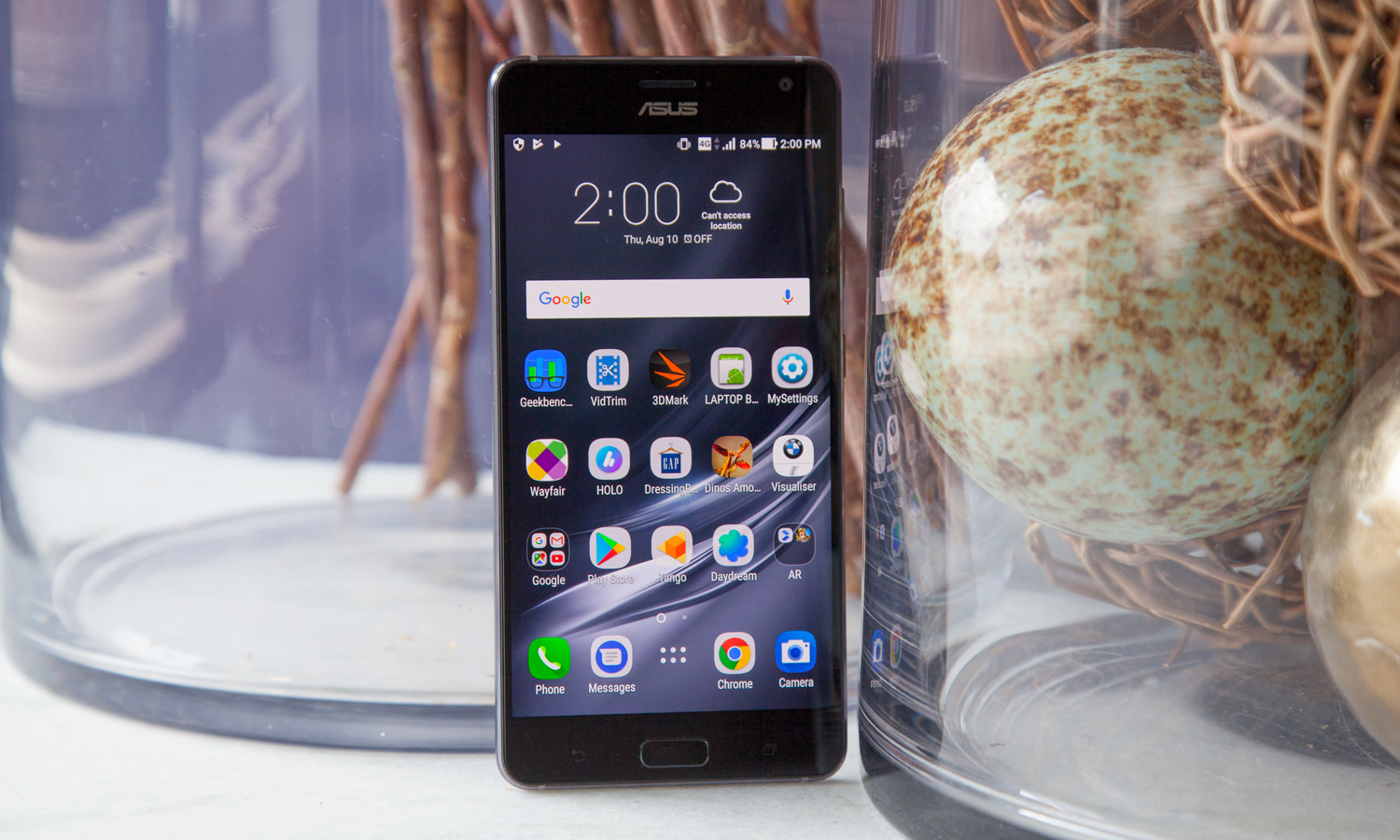
The sides of the phone are made from dark gray aluminum with a touch of pearlescence, giving it a pleasant shimmer. Two silver stripes along the top and bottom of the phone evoke faint remembrances of old HTC smartphones like the One M8. Along the right side of the phone, you'll find a long volume rocker and power button, while there’s a dual SIM card/microSD slot on the left. Along the bottom sits the 3.5mm audio jack, a USB Type-C port and the speaker.
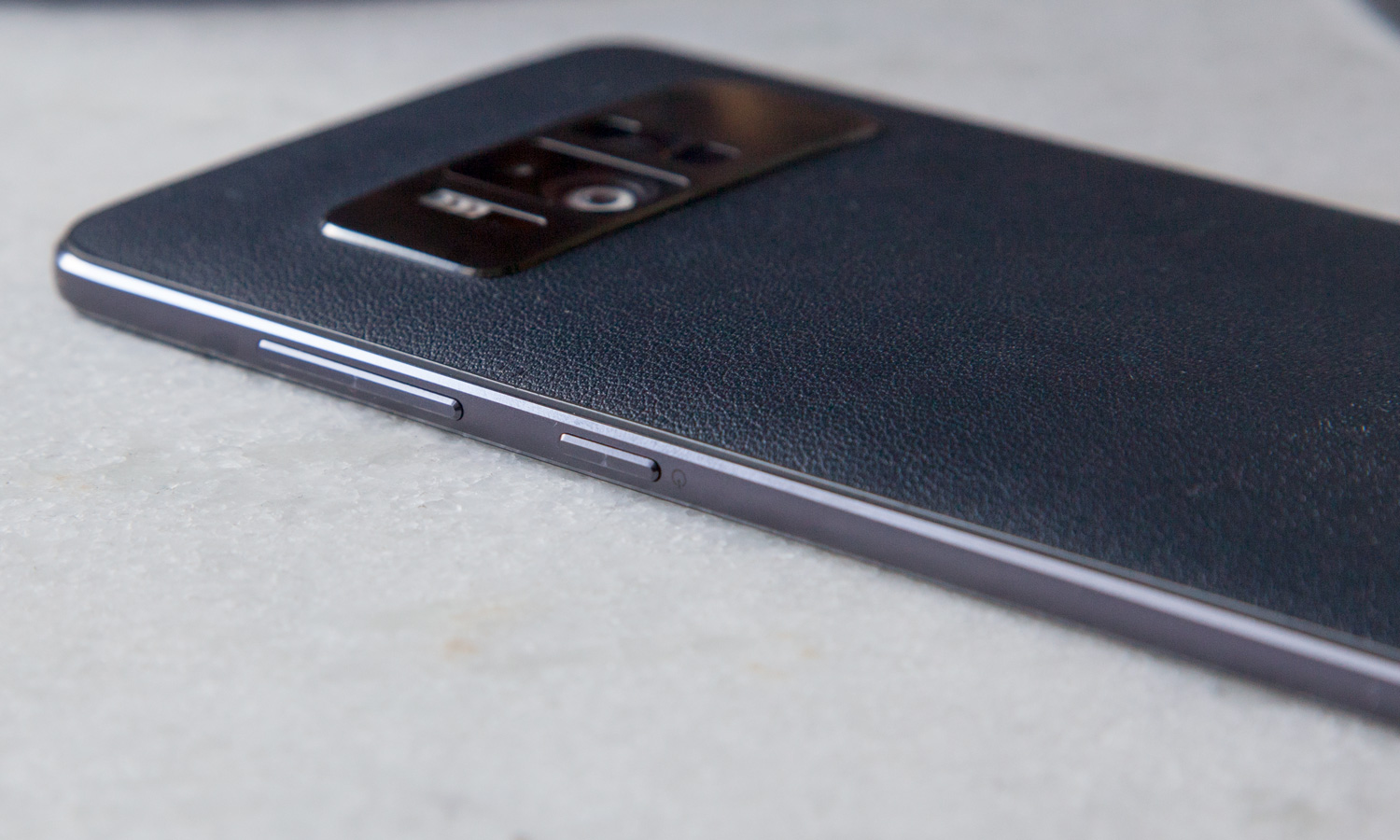
The front of the ZenFone is primarily glass, though the 5.7-inch display is boxed in by some rather thick bezels along the top and bottom. The 8-megapixel front camera resides in the top-right corner, ceding the spotlight to the center-mounted Asus logo. The backlit capacitive Back and Recent apps buttons surround a physical home button.
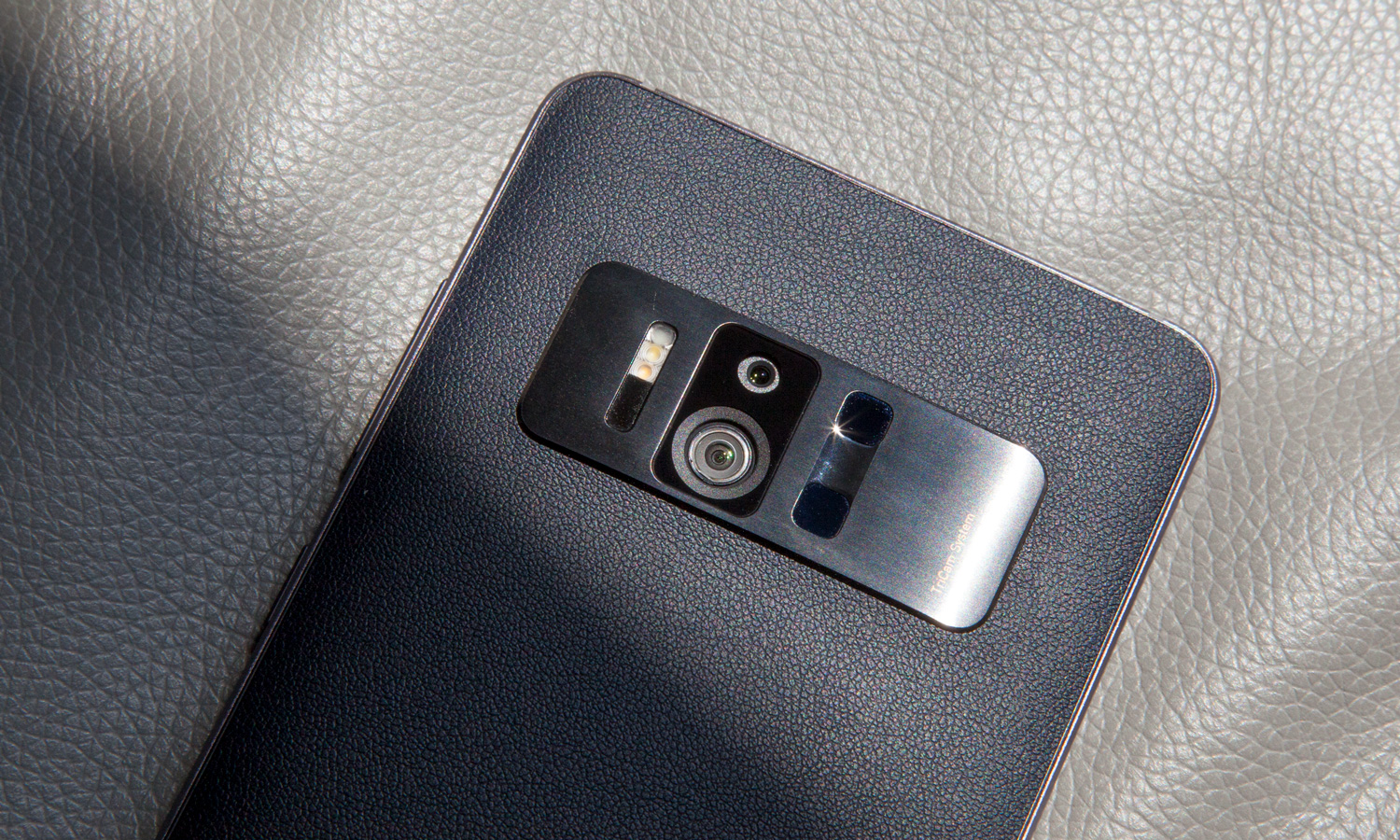
Weighing 5.9 ounces and measuring 6.2 x 3.1 x 0.35 inches, the ZenFone is heavier, taller, wider and thicker than the competition. The LG G6 (5.9 x 2.8 x 0.31 inches, 5.8 ounces) and Samsung Galaxy S8 (5.9 x 2.7 x 0.31 inches, 5.5 ounces) are the same thickness, but the Galaxy S8 is the lightest. And while the Zenfone is a tad large, it's nowhere near as big as the gargantuan Lenovo Phab 2 Pro, the first Google Project Tango phone. At 9.1 ounces and 7.1 x 3.5 x 0.4 inches, it’s essentially a tablet.
Display: Colorful But Not Bright
The ZenFone's 2560 x 1440 Super AMOLED display offers vibrant, stunning colors bursting from every pixel. The touch screen can reproduce an incredible 219 percent of the sRGB color gamut, demolishing the 149 percent smartphone average. The GS8 and G6 were pale comparisons at best, with scores of 183 and 134 percent, respectively.
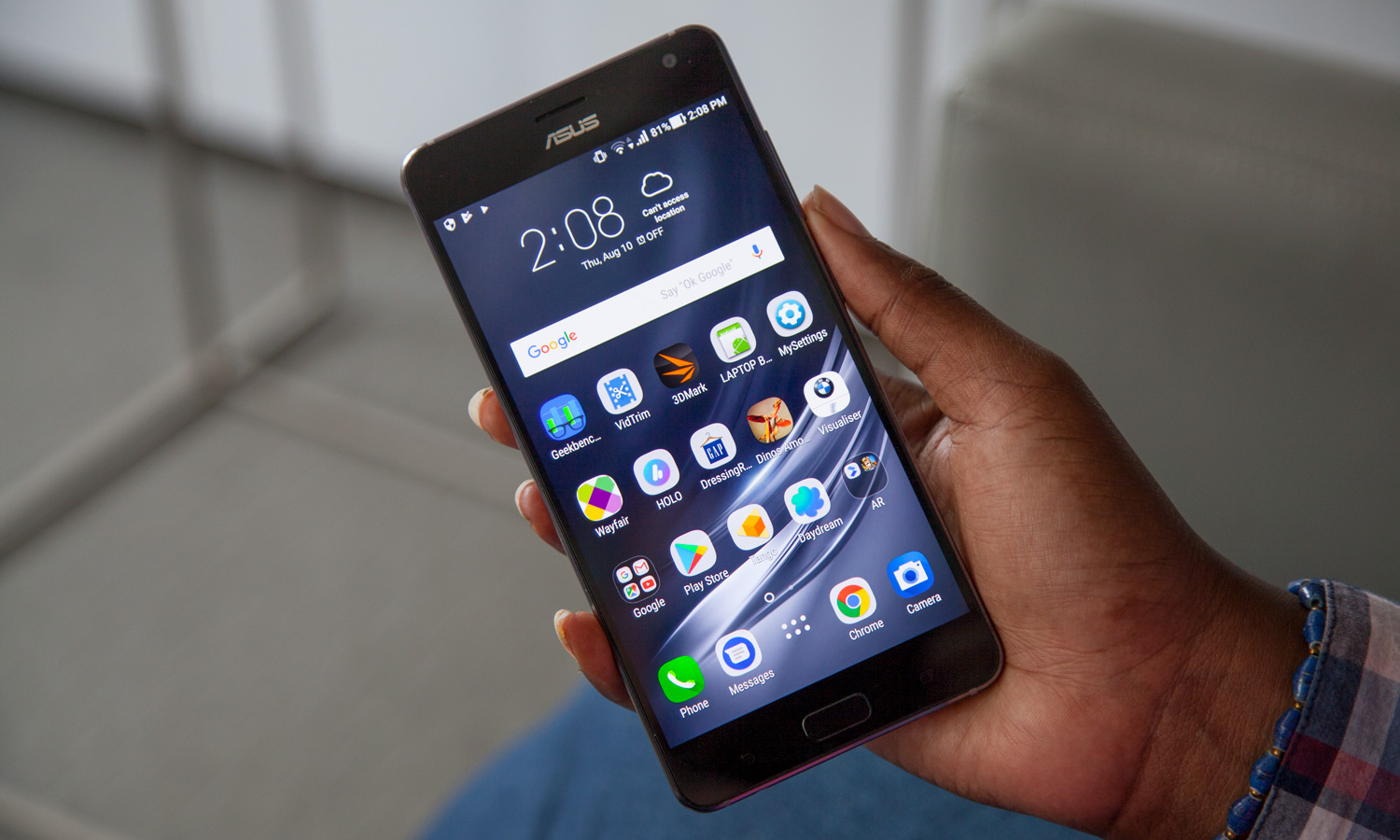
The colors popped off the screen during the Black Panther trailer. The Dora Milaje's ruby-red uniforms held my eyes in rapt attention, allowing me to truly appreciate the intricate banding of the chestnut-brown leather straps and polished gold adornments. Details were so sharp that I could make out just about every detail of the tattoo inked on actress' Florence Kasumba's scalp.
That extra real estate makes for some sharp detail, which I really appreciated as I played Evil Robot Traffic Jam.
But vividness doesn't equate to brightness. The ZenFone averaged 314 nits when we measured the display, falling short of the 443-nit average. The GS8 produced 437 nits, while the G6 delivered an absolutely brilliant 557 nits. The ZenFone's dimness made it difficult to see the screen outdoors, especially in direct sunlight.
Audio: Best with Headphones
With a single bottom-firing speaker, the ZenFone gets pretty loud for a smartphone. That's thanks to the phone's 5-magnet speaker and smart amplifier. Created specifically for mobile devices, the amp allows the new speaker to play audio at higher volumes without any distortion.
When I listened to Bruno Mars' "That's What I Like," the synths and percussion were pretty clear, although the bass was a bit weak. I wish Asus would have fit two speakers along the bottom, as that lone mono speaker can't deliver the rich stereo quality I prefer. However, I do appreciate that Asus included an outside mode that kills off the bass (which will be lost in open air anyway) and focuses on the mids so the sound travels better.
The Project Tango platform is missing a must-have app like Pokemon Go that would justify getting the ZenFone AR over other top handsets.
The ZenFone's audio really starts to shine when you pop in a pair of headphones. Using DTS' Headphone: X 7.1 Virtual Surround software, the phone simulates a 7.1-surround-sound home theater. The smartphone also supports Hi-Res audio, so you can stream Tidal or play some FLAC files.
Daydream of a Tango: When Two Become One
The ZenFone is the first phone to feature Google Project Tango and Daydream VR. That means that this smartphone can offer both augmented and virtual reality at the touch of a button. Using Daydream VR is pretty straightforward: You just place and secure the ZenFone in Google’s Daydream VR headset, sit through the 5-minute tutorial, and you're ready to go. To date, there are more than 150 games and apps available for Google Daydream. Many of them are free, but some range in price between 99 cents and $14.99.
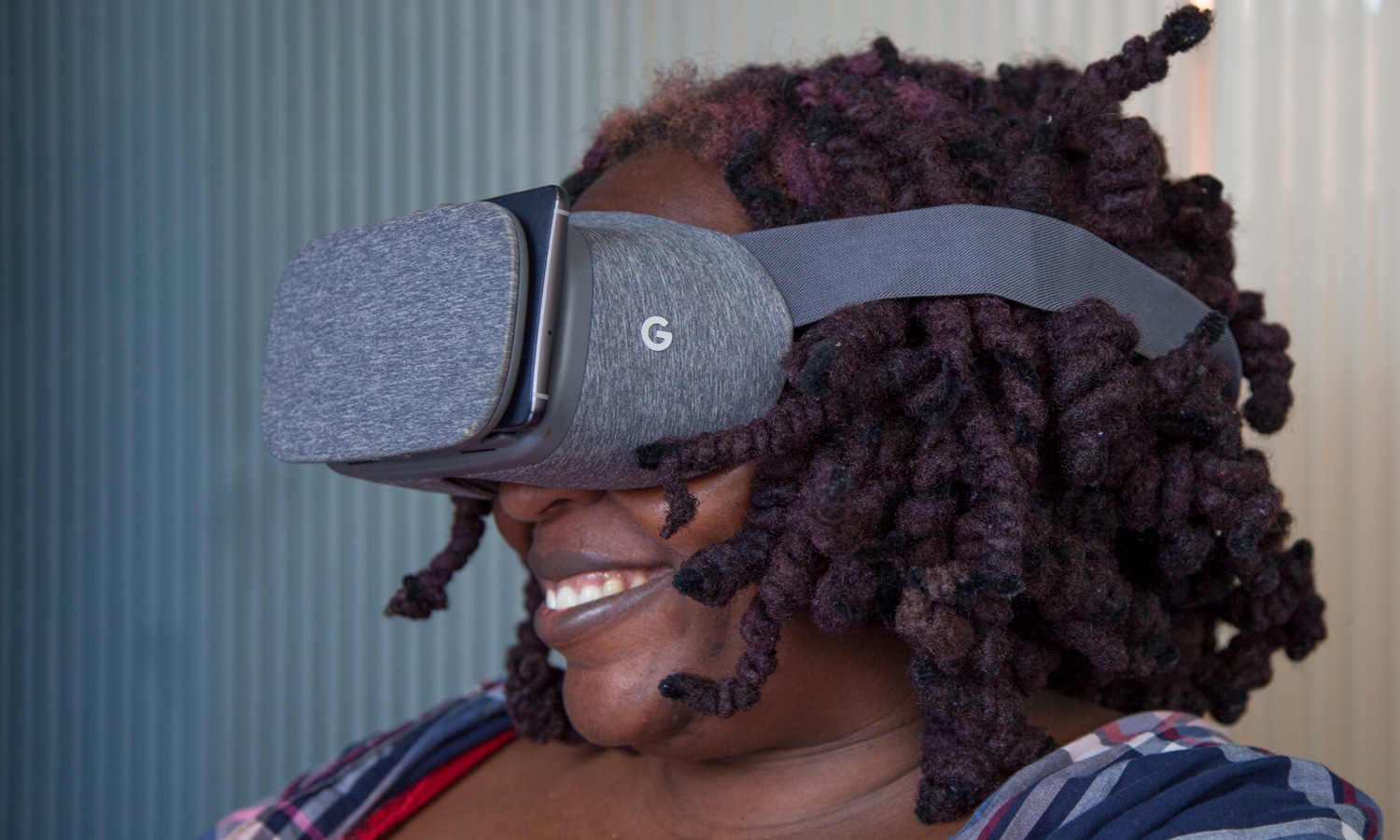
With its 5.7-inch display, the ZenFone is one of largest Daydream-compatible phones on the market. That extra real estate makes for some sharp detail, which I really appreciated as I played Evil Robot Traffic Jam. The cartoony explosions were a bit sharper on the ZenFone compared to my Samsung Galaxy S8+. When I switched to gunning down enemy aircraft in Bandit Six, the ZenFone also had less motion blur as I quickly changed my view to lock onto the next bogie.
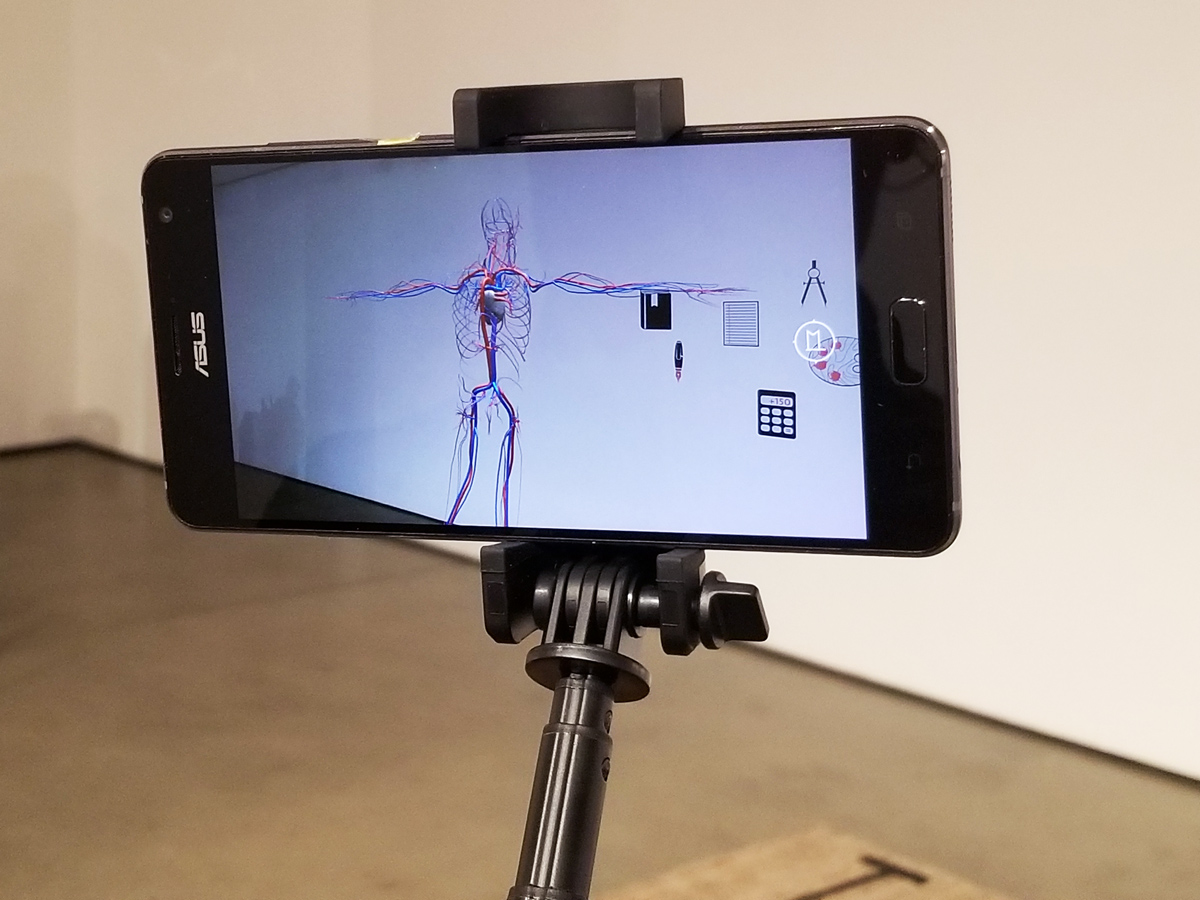
While it's definitely nice having a phone that can do virtual reality, it's quickly becoming a ubiquitous feature as more premium phones support Daydream. The ZenFone's real claim to fame is its ability to support Google Project Tango. Similar to the Lenovo Phab 2 Pro, the ZenFone AR uses a series of cameras to create augmented-reality magic.
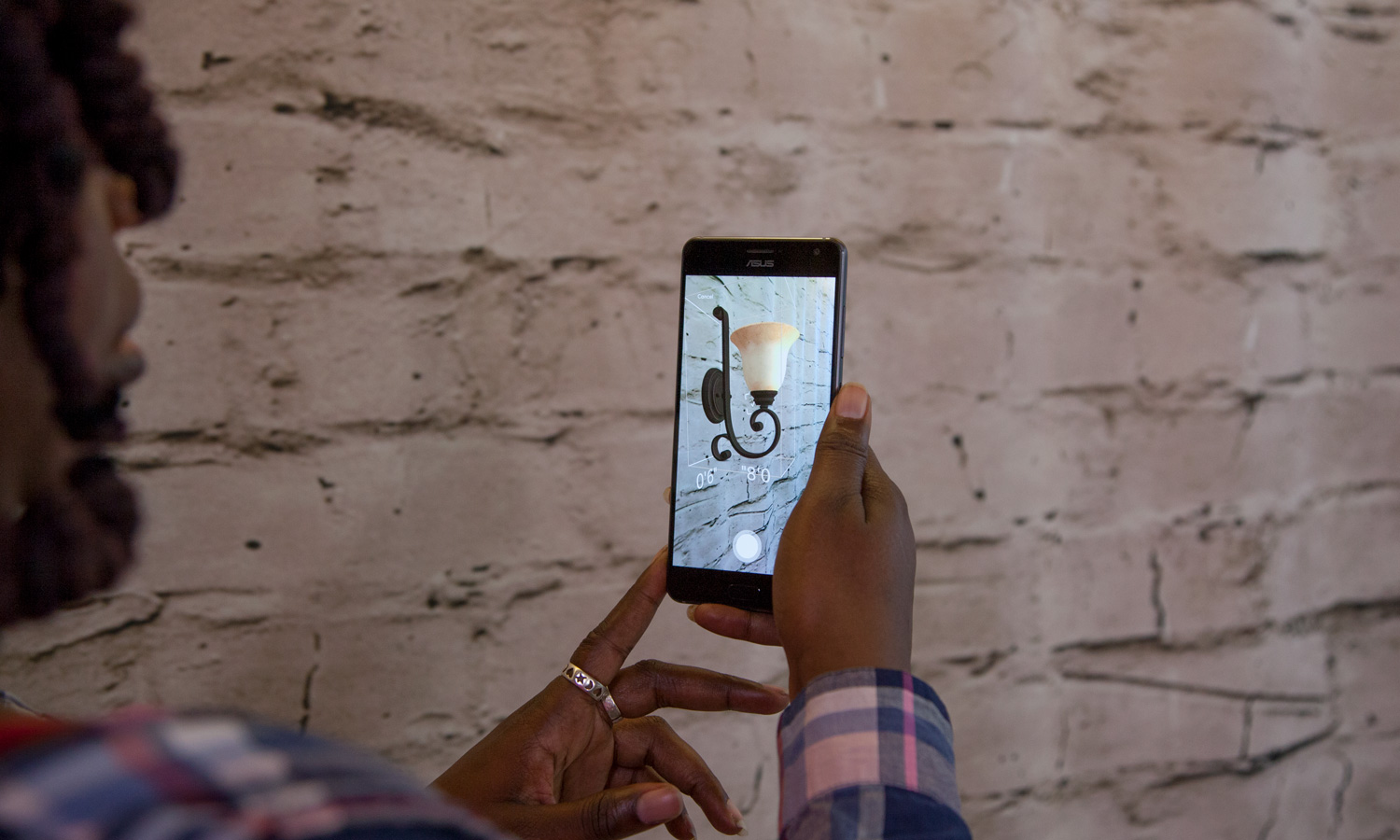
In addition to the rear-mounted 23MP camera, Asus' TriCam system has a motion-tracking sensor that keeps tabs on the phone's location as it moves through space. There's also the depth-sensing camera that employs an infrared sensor to map the room. Together, the cameras help AR software create seamless overlays onto the real world.
MORE: Awesome Things the ZenFone AR Can Do
I had the opportunity to play interior designer with the free Wayfair View app curated in the Google Tango app store. After selecting a really cute olive-green ottoman from the catalog, I pointed the ZenFone where I wanted my new virtual furniture. From there, a large box appeared and unfurled, leaving the ottoman right in front of my couch. The footstool was to scale, so I could get a realistic view of how it would look if I decided to purchase the furniture. Even cooler, the closer I got to it, the more detail I could see in the knitted fabric.
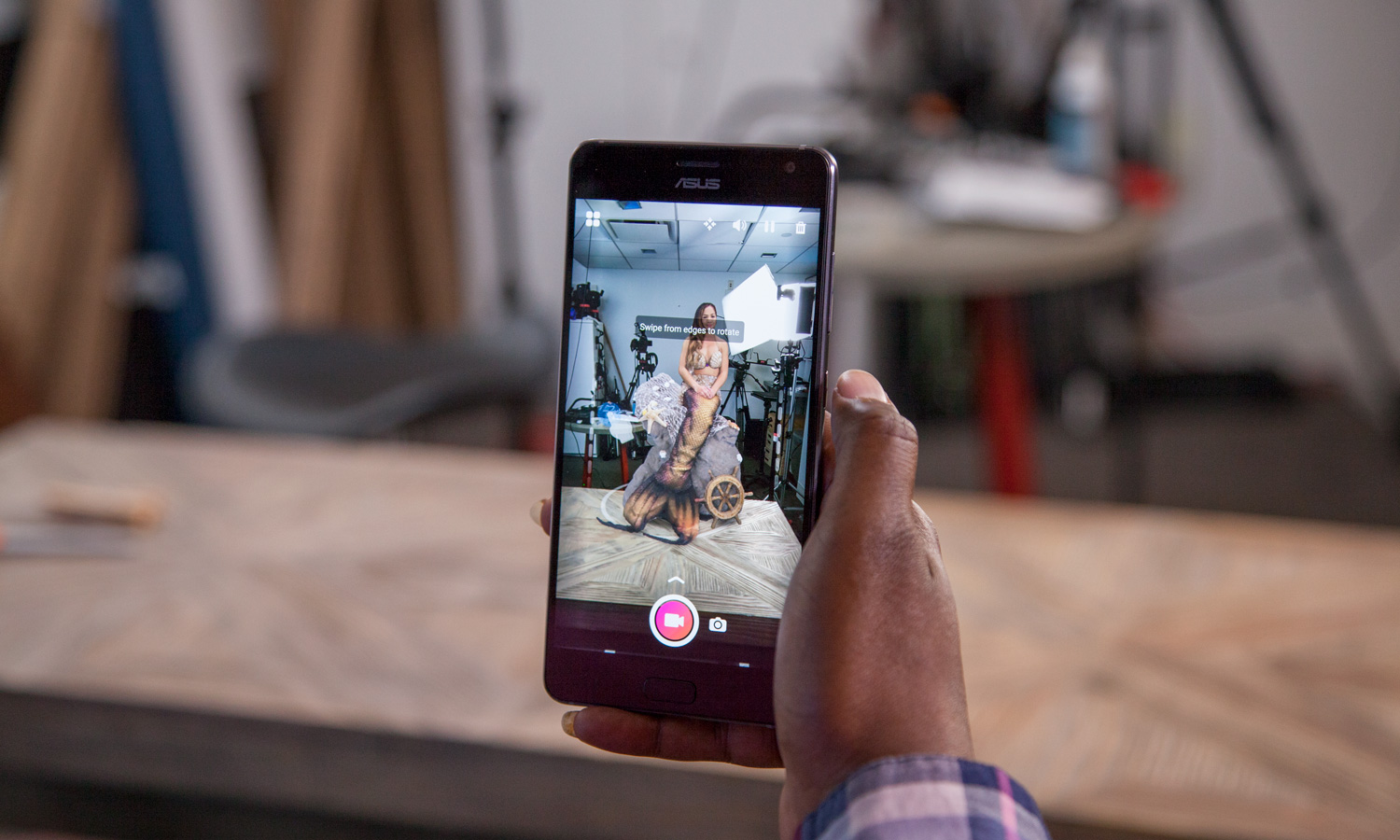
Project Tango has approximately 30 apps available, which is a drop in the bucket compared with the Daydream library. And while it's fun using the Holo app to watch Spider-Man slink around my living room, Google has its work cut out for it convincing consumers that Tango is more than a fancy gimmick. Home-decorating apps such as Home AR Designer, Lowe's Vision and Magic Plan are a good start, but the platform is missing a must-have app like Pokemon Go, which would justify getting this mixed-reality phone over other top handsets.
Performance: RAM Tough
The ZenFone is outfitted with a 2.4-GHz Qualcomm Snapdragon 821 processor, which isn't the most powerful CPU on the market, but it features a whopping 8GB of RAM. That means it's going to take a lot to slow the ZenFone down — namely, running a game of Wands in the background with 10 open tabs in Google Chrome while launching the Camera and a few AR apps. And all of that elicits only a slight stutter when switching between apps.
On Geekbench 4, a synthetic performance test, the ZenFone scored 4,224, which is on a par with the G6 (4,073) and its 821 processor. It's more than enough to beat the 3,714 smartphone average, but not the Galaxy S8 and its Snapdragon 835 CPU, which notched 6,124. The OnePlus 5, which also has 8GB of RAM in addition to its Snapdragon 835 CPU, achieved 6.542.
When the ZenFone's 23MP rear camera isn't busy mapping rooms for augmented-reality adventures, it takes a darned good photo.
The ZenFone had a solid showing on the 3DMark Ice Storm Unlimited graphics test. The phone hit 31,938, topping the G6's 29,611 and the 21,015 category average. It still couldn't match the GS8, which achieved 35,903.
When we ran the Jetstream 1.1 JavaScript test web browser test, the ZenFone matched the phone average with 43.35. Both the G6 and GS8 performed better at 56.2 and 67.5, respectively.
Cameras: Solid Shooters Hold Their Own
When the ZenFone's 23-MP rear camera isn't busy mapping rooms for augmented-reality adventures, it takes a darned good photo. Taking advantage of the sensor's high resolution, Asus loaded up on the camera modes, including Low Light, Beautification, HDR Pro, Depth of Field and 92-MP, which creates an image with an insane 92-megapixel resolution. Some features like Miniature Mode, which makes everything look like it's in a dollhouse, are more gimmicky fun than anything, but hey -- who doesn't like a little whimsy now and then?
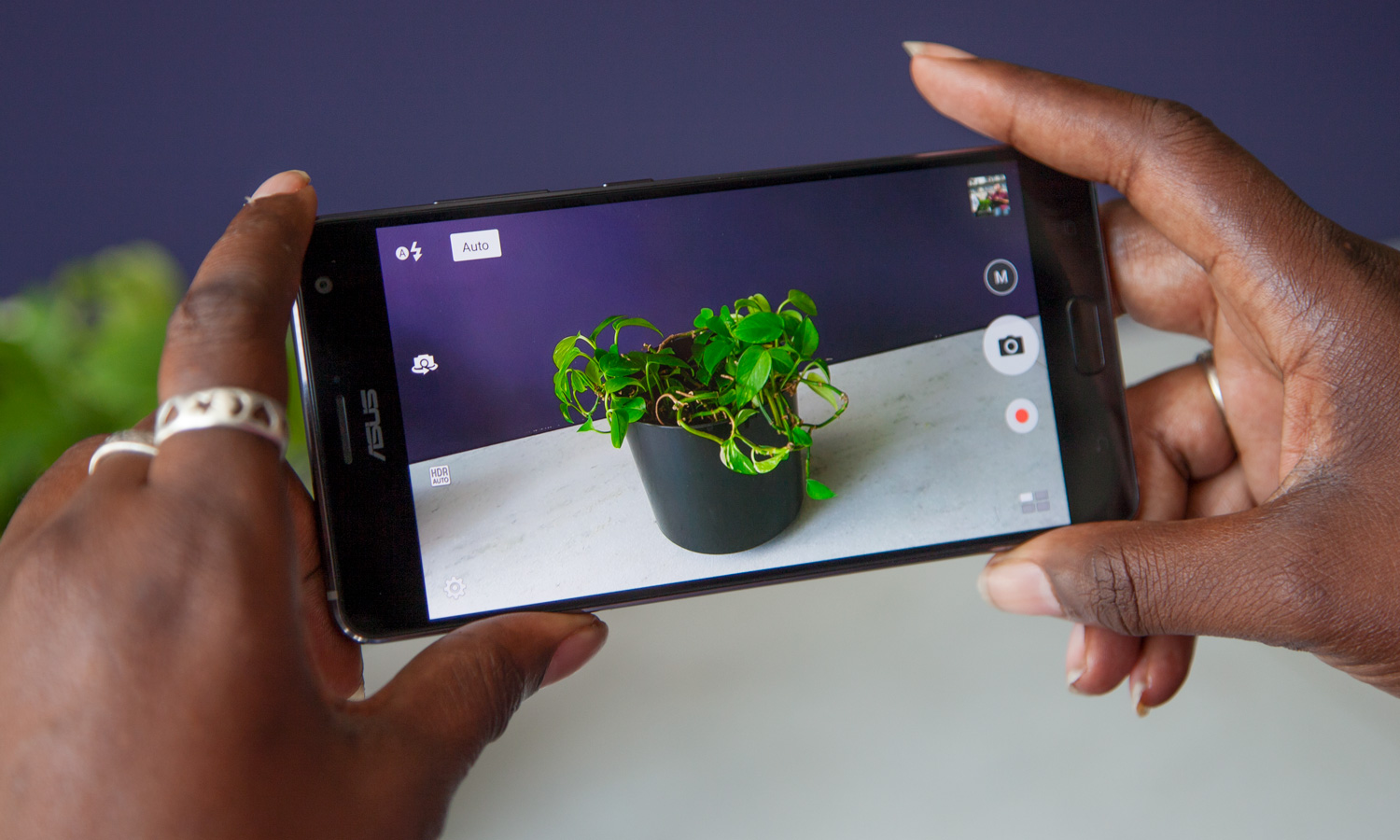
Fun modes aside, I found that images captured with the ZenFone offered warmer color than my Galaxy S8+. For example, the reddish-brown walnut portion of the Even H2 headphones I'm reviewing looked more lifelike in the ZenFone's shots. My S8+'s photos had a white haze, despite me wiping the lens numerous times. However, I was able to see more of the grain detail in the GS8+ shots.
The ZenFone also had the advantage during low-light shots, producing clean photos with clear detail and vivid color in a dimly lit basement bar.
The 4K video samples of a busy New York City street I took with the ZenFone delivered gleaming yellows, bold reds and deep blacks as the cars rode by. Details were clear enough that I could easily read the signs across the street.
When it came to the front-facing cameras, the ZenFone's 8MP shooter delivered better color, capturing the various shades of purple in my locks. However, my GS8+ produced better detail, letting me see view the individual coils in my curled locs.
MORE: Best Camera Phones
Software: A Clean Version of Nougat
Unlike the ZenFone 3 Zoom that came out earlier this year, the ZenFone AR runs Android 7.0 (Nougat) with a ZenUI skin. (Just in time for Google to launch Android O, but you can’t have everything.) The ZenUI interface is clean and slick, with bright, colorful app icons with rounded edges. Switching between apps and home screens is a very smooth experience, but my favorite part about the UI is the customization options.
Swiping upward from the bottom of the phone reveals the Manage Home hub, which lets you change how your icons look, how big they are and how they’re aligned. You can also control the scroll effects, font types and color. The little rocket ship icon the software uses as the Close All button is cute, but the notification telling me how much memory was just freed up is sheer genius.
Asus kept the ZenFone AR refreshingly free of bloatware on the unlocked version of the handset. However, this might not be the case for the Verizon iteration of the smartphone. Outside of the usual Google apps (Gmail, YouTube and Chrome), the phone has apps for Tango and Daydream that will take you to curated stores and not much else.
Battery Life: The Price of Progress
There's a price to be paid for all this forward-facing tech, and in the case of the ZenFone AR, the cost comes at the expense of the battery life. The smartphone's 3,300-mAH battery lasted only 8 hours and 20 minutes on our battery test, which consists of continuous web surfing over AT&T's 4G LTE network. That result is less than our 9:37 smartphone average as well as the LG G6 and Galaxy S8, which turned in times of 8:39 and 10:39, respectively.
The ZenFone's battery life gets even shorter once you start playing with any of the AR or VR apps. I spent 30 minutes playing with several of the Tango apps, only to notice that my battery had gone from 100 percent to 64 percent. The phone does offer Quick Charge technology, which means you can gain a 80 percent charge in approximately 35 minutes.
MORE: Smartphones with the Longest Battery Life
Bottom Line
The Asus ZenFone AR gives us a tantalizing peek at the future of smartphones. For $599, you get a smartphone powerful enough to support some of Google's most innovative software. There's also the slick customizable user interface and the excellent camera that's vivid, sharp and capable of taking 92 megapixel photos. However, the ZenFone’s battery life could be longer, especially if you plan on running AR or VR programs for any length of time.
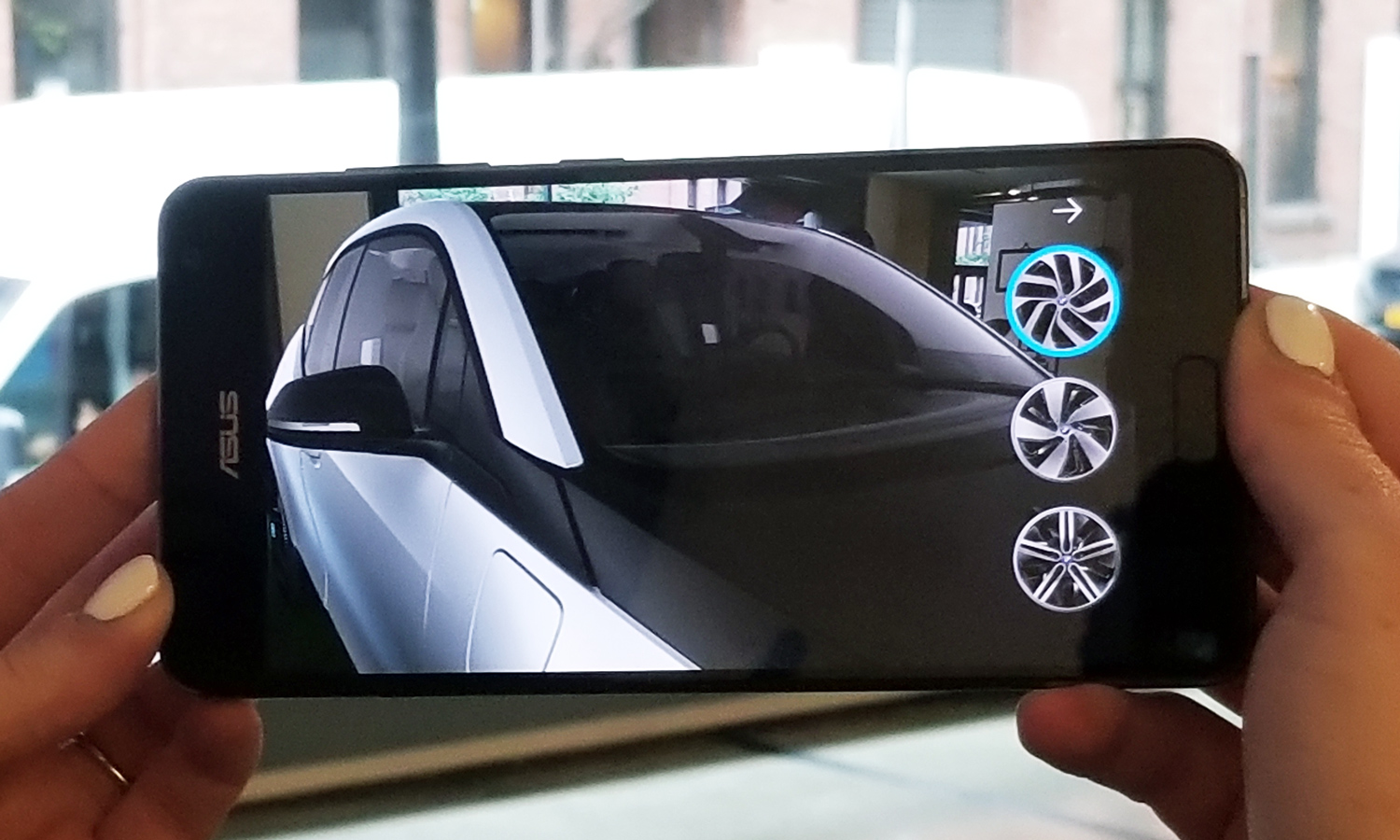
For $667, you could get the Samsung Galaxy S8 unlocked, which offers longer battery life, better performance and a brighter display. The S8 also supports Google Daydream, so you can explore Google's VR library or check out Samsung Gear VR's expansive library of games and apps. You would, however, lose out on what Google Project Tango's AR has to offer by opting for the S8.
However, there's such a small number of apps, you might be better off waiting to see if more developers embrace mixed reality. Apple’s upcoming iPhone 8 is likely to introduce AR capabilities of its own, with Apple already making its ARKit app-building tool available to developers. In other words, expect the AR landscape to change dramatically before the ZenFone AR is even a few months old.
Overall, the ZenFone AR is a phone for early adopters who want to have the latest and greatest, but mainstream consumers might want a phone with more familiar features — at least until AR support becomes more widespread.
Sherri L. Smith has been cranking out product reviews for Laptopmag.com since 2011. In that time, she's reviewed more than her share of laptops, tablets, smartphones and everything in between. The resident gamer and audio junkie, Sherri was previously a managing editor for Black Web 2.0 and contributed to BET.Com and Popgadget.

